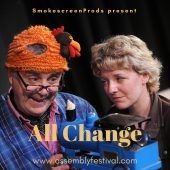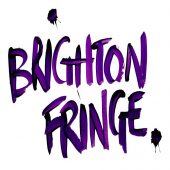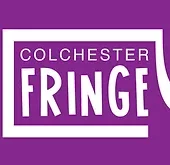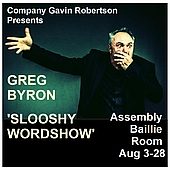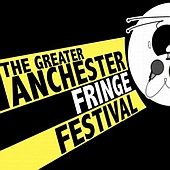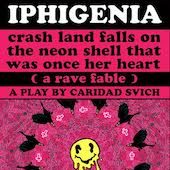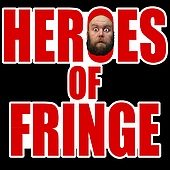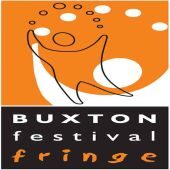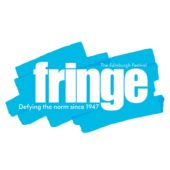
Here are some Edinburgh Fringe fun facts…
This year, I attended my first Edinburgh Fringe Festival and while I found the experience
exhilarating and unforgettable, I also came away with an understanding of what one
needs to know to make the experience as positive and successful as possible.
The Edinburgh Fringe is unlike any other performance-based experience, because it is
one of the only places that anyone can bring in a performance piece and that piece has
the potential to become a huge hit that could make their creator a household name. Just
look at the success of Fleabag and Baby Reindeer. Go on, look at them. You did?
Good, right? Okay, moving on. However, as enticing as the promise of unexpected
fame and an avalanche of accolades might be, there is the other and sadly more
common outcome of the Fringe, which is what inspired me to write this.
By the third week of the Fringe, I began to see on the faces of many disappointed and
crestfallen performers a condition I call Fringe Failure Face. It is the look of utter defeat
of an artist who put in time, money, creativity and hours and hours of promotion (and
more money), only to see audiences of no more than 10-15 people at their show. In
many cases, their piece simply didn’t resonate or catch fire. I should add that Fringe
Failure Face was not restricted only to newcomers, but to several Fringe veterans who
found their shows, while perhaps well reviewed, not well attended.
Much like a colonoscopy, a divorce and or a bowl of Haggis, the only way to appreciate
the Fringe is to experience it. In my case, the show we brought was a play, a parody of
Spy movies that posed the question, “What would happen if James Bond went into
rehab?” Not coincidentally, the name of our show was The Spy Who Went Into Rehab.
An advantage the title had is that you know exactly what the show was when you heard
it. What was amazing and enlightening, is that in addition to our show, there were
THREE OTHER James Bond-centric shows, two musicals and a one person show, also
playing. Needless to say, in Edinburgh, great minds do think alike.
What I discovered is that while there are no guarantees for success at the festival, there
are a series of steps you can take to get as close to succeeding as possible. So, in the
spirit of helping my fellow future Fringer-goers, I have laid out what I call my TEN FUN
FRINGE FESTIVAL FACTS. Though they are more targeted to Yanks such as myself
who crossed the pond to get here, they really can apply to anyone.

FFFF #1: KNOW WHY YOU ARE GOING
Shows go the Fringe for a variety of reasons. Some go just to have the experience of
having performed there. Others are bringing shows back with the intent of building an
audience. Still others are hoping to attract the attention of a producer who can take their
work to other fringe festivals, or to take them on tour or produce in established theaters
or, rarest of rarities, to develop into a Netflix or Amazon series (Note my reference to
Fleabag and Baby Reindeer). Knowing what your goal for the Fringe is will go a long
way to helping you not only manage expectations but have a game plan.
FFFF#2: TREAT YOUR ART LIKE A BUSINESS
Like Comic Con, The Sundance Film Festival and Graham Norton’s couch, the Fringe
has grown in visibility over the years, becoming a global phenomenon. There is a
business to performing there and the more you treat it like a business, the more
successful you are apt to be. Most artists are uncomfortable with the idea of promoting
and marketing themselves but being able to master those skills are invaluable. The
peculiar effect of performing at the Fringe is a kind of schizophrenia: on one hand you
are elated to be creating and on the other, you are riddled with anxiety trying to ensure
you will get good reviews and full houses.
FFFF#3: SHOW THEM THE MONEY
One of the first things you will discover is that taking a show to the Fringe is
EXPENSIVE, especially if you are coming from another country. For our show, we
found it more cost effective to rehearse our actors at home and then fly everyone over,
as opposed to trying to rehearse in Scotland, or cast UK talent. Reserving a space,
printing posters and flyers, hiring a publicist and finding accommodations all cost
money, but I can tell you from my experience, IT’S WORTH IT. I took the attitude that
the Fringe was a once in a lifetime opportunity and I needed to treat it as such. I didn’t
know if our show would be a success, but I felt it was worth raising as much money as
possible to give us every advantage. There are numerous ways to raise money: crowd
funding campaigns, friends and/or family, grants, benefit shows, holding fundraisers or
hiring the Legion of Doom to rob a few financial institutions and then taking a
percentage of your profits.
FFFF #4 – LOCATION, LOCATION, LOCATION (Part 1)
The first thing you must secure as a new Fringe show is the venue. Most of the venues
are within close proximity to one another, in and around the campus of The University of
Edinburgh, but some are more far flung, literally across town. Spaces range from
massive halls with up to 800 seats, to 40 seat boxes that resemble the kinds of shipping
containers you hear used for illegal contraband and human trafficking. Do your research
on the different venues and then reserve as early as possible. You might not have any
say in where you are placed, but at least you will know what challenges you might face.

FFFF #5 – TIME IS THE ESSENCE
In addition to WHERE you will be performing, of equal importance is WHEN you will be
performing. Our show was slotted in at 12:10, which was the earliest time, and it put us
at a disadvantage. People were only arriving at the Fringe, so they were not always
ramped up to head into a theater. Even so, with a less-than-ideal time slot, we were
able to do at least half to three quarter houses every day, thanks to our marketing,
reviews and one of our cast members who was a Fringe veteran and favorite. Now, if
you get a less-than-ideal venue at a less-than-ideal time, either too early or very late,
don’t despair. Get creative. Target your marketing to educate and alert people about
when and where your show will be. DON’T WAIT FOR THEM TO COME TO YOU – GO
TO THEM!!! And while kidnapping is not recommended, I understand it got a lot of
positive results at the first annual Bogota Colombia Fringe.
FFFF #6 – PLEASE, PLEASE MR. POSTER MAN
Once you have secured your space and time, the first step in your marketing plan
begins with POSTERS. Put together a compelling image for your show that will be your
brand for the Fringe. Spend the money on a good designer if you are not able to use
Photoshop or (gasp) AI. Your venues will reach out to you with Zooms to educate and
instruct you. Get your poster designs in early so the venue can put them up. Also, don’t
be afraid to ask questions of the venue staff, to know exactly where your posters should
go.
FFFF #7 – LOCATION, LOCATION, LOCATION (Part 2)
After you order your initial, early group of posters, you will then order your secondary
group of posters, which will be put up around town. If you learn nothing else, learn
this – An Americano after ten PM is a bad idea. Also, it is not enough to have posters
put up around Edinburgh. To maximize the effect and make it worth your money, make
sure your posters are put up NEAR YOUR VENUE!!! The one mistake we made (well, I
made it, since I was in charge of poster detail), was not talking to the Proper Poster
People, who Place the Posters in their Proper Positions Pertinent to our Performances.
Out of Hand has an office known as The Fringe Shop. Their job is to put the posters
near the appropriate venue. Remember, you need to get your orders in early, or your
posters will not be seen where they need to be seen. A few posters in strategic
locations will do far better than dozens placed where your audience probably won’t even
see them. Again, not to brag, but even with virtually no Poster Presence Practically Put
in Productive Places, we were able to drive business to the theater in other ways.
So once again, less than ideal circumstances can result in unexpected creative
marketing solutions. I really should be doing TED Talks about this stuff.

FFFF #8 – FLYER ME TO THE MOON
Next in your marketing arsenal are THE FLYERS. These are the necessary evil of the
Fringe. They are cardboard flyers and postcards with your show logo and information,
which you will need to print in the hundreds to thousands. Every day, you must hand
them out to people coming to see other shows at your venue and leaving shows at other
venues. You can hire flyering teams (which I recommend), basically pairs of young
people who will hand out flyers for your show before and after, in high traffic areas close
to you. Anything you can do to make your flyering team stand out is encouraged. In our
case, we printed up T-Shirts with our show advertising on them. But don’t rely on the
flyering teams alone. Always keep a stack on you, as you never know where you will be
and you can hand them out. I’ve handed them out at restaurants, pubs, stores and just
walking through town. You’d be amazed at the difference it can make in getting people
in to see you. I’m considering handing out flyers for dating purposes, but that might be a
bit too creepy.
FFFF #9 – STAR STUCK
One of the most visible ways to successfully market your
show besides word of mouth, posters and flyering are reviews. The review system is
from one to five stars. FIVE STARS is the gold standard and relatively few of the more
than 3500 shows at the Fringe achieve them. It is the most you can get and tells
everyone that your reviewer (and by association their paper/website/blog/Facebook
Page) thought you were a hit. FOUR STARS is almost as good and a bit more likely to
get and it still will be seen as a rave. THREE STARS is a solid response. It means that
maybe the show wasn’t perfect, but it still has something to recommend it. TWO STARS
means either you offended the reviewer, they hated your show, or their partner just
broke up with them. I didn’t see any ONE STAR reviews.
Nobody in their right mind should display them. While it might seem daunting or
extreme, hiring a publicist is a good way to get reviewers to see your show. If you can
spend the money, it will be money well spent. Once you get reviewed and assuming it is
a THREE STAR or above, you then must print the review on a sticker (printers provide
the service) and then you run around, adhering the stickers to your posters, as well as
putting them on your flyers. As the reviews tend to come out within the first week or two,
prepare to do a lot of stickering. In our case, since we got several reviews quickly, I
simply printed up new flyers with the majority of starred reviews on them.
And …
FFFF #10 – IT’S JUST AN HONOR TO BE THERE
It can be very easy during one’s time at the Fringe to get caught up in the possibilities of what success can promise, whether it’s the reviews, attendance or awards (I didn’t even talk about the awards, let’s NOT go there!) The fact is anyone who brings a show to the Edinburgh Fringe Festival has accomplished something that few people will ever experience. By knowing what you can expect, you might be able to save yourself from Fringe Failure Face and
instead feel that you have been part of something unique and exceptional.
Greg Ostrin is the writer and co-producer of THE SPY WHO WENT INTO REHAB
Listen to more from Gregg in this podcast.






